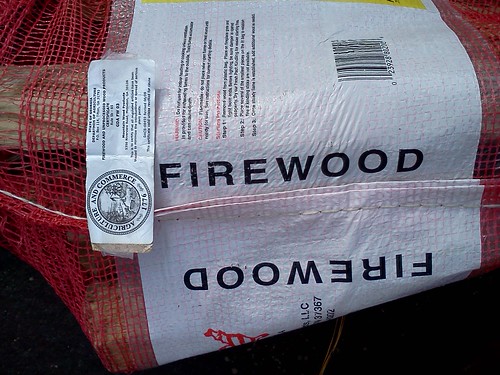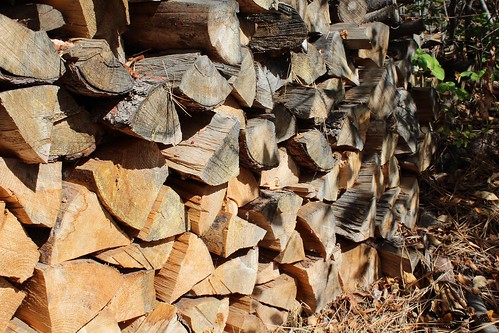There have been a couple noteworthy federal grants awarded recently that will benefit environmental research efforts. One was a $223,602 U.S. Fish and Wildlife Service grant awarded to researchers at Western Michigan University to fund a collaborative research effort into white-nose syndrome in the hopes of finding a solution to combat the disease. The other was a $6.3 million U.S. Department of Agriculture grant awarded to Michigan State University to support native pollinator research and education outreach efforts.
These grants will hopefully bring great successes to two very different, but equally important issues. We rely on both bats and bees to keep our environment productive and balanced. Check out the details of these projects in the following articles.
The $223,602 grant was part of an overall $1.8 million targeted toward eight projects across the U.S. focused on research and management of white-nose syndrome.
The fungal infection has killed at least 6 million bats in 27 states and five Canadian provinces since it was first documented in New York in the winter of 2006-07. Cases of white-nose syndrome were reported in northern Michigan for the first time this year.
“Bats are fascinating animals that are vital for a healthy environment. We are hopeful that these investments into research will get us closer to getting the upper hand on this devastating disease,” said Wendi Weber, co-chair of the White-Nose Syndrome Executive Committee and northeast regional director of the U.S. Fish and Wildlife Service, in a statement.
Maarten Vonhof, associate professor of biological sciences and the environmental studies, and Robert Eversole, master faculty specialist in biological sciences, will be heading the research at WMU. Timothy Carter of Ball State University and Kevin Keel of the University of California in Davis also will collaborate on the project.
The group will test the efficacy of chitosan, a compound obtained from the outer skeleton of shellfish, to limit the growth of white-nose syndrome — Pseudogymnoascus destructans — on experimentally infected bats. The compound prevents the fungus from growing and is a wound-healing accelerant that may help to limit damage to bats’ skin caused by the fungus.
Eventually, the research may lead to a treatment that is available for widespread use to treat hibernating populations of bats.
In all, eight projects in New York, New Hampshire, Pennsylvania, Ohio, Michigan and Wisconsin received funding through the service’s Endangered Species Recovery and Science Applications program.
Since 2008, the service has granted more than $17.5 million to institutions and federal and state agencies for white-nose syndrome research, according to a press release.
“Scientists from around the world are working together to understand this disease, and to develop the tools to manage WNS and conserve our native bats,” said Dr. Jeremy Coleman, the U.S. Fish & Wildlife Service’s national white-nose syndrome coordinator. “Findings from past research have led to improved methods for detecting Pseudogymnoascus destructans, development of potential tools to slow disease spread and treat infected bats and the development of a national bat population monitoring program.”
———————————————————————————
Published: Aug. 6, 2014
Contact(s): Layne Cameron Media Communications office: (517) 353-8819 cell: (765) 748-4827 Layne.Cameron@cabs.msu.edu, Rufus Isaacs Entomology isaacsr@msu.edu, Jennifer Martin USDA office: (202) 720-8188 jmartin@nifa.usda.gov
The U.S. Department of Agriculture’s National Institute of Food and Agriculture has awarded $6.9 million to Michigan State University to develop sustainable pollination strategies for specialty crops in the United States.
“Specialty crops are valued at more than $50 billion every year, and pollination is critical to ensure successful fruit set and profitability of the industry,” said Sonny Ramaswamy, NIFA director. “With the recent declines in pollinator numbers, especially honey bees, this grant is extremely important for the sustainability of the specialty crop industry in the United States, which produces the fruits, vegetables and nuts recommended by USDA for a healthy diet.”
The research and outreach efforts being supported by this grant will provide growers with information on pollination, pollinators and management practices that will keep their crops productive year after year, he added.
The grant was funded through the Specialty Crop Research Initiative, part of the 2014 Farm Bill that was signed at MSU.
Rufus Isaacs, MSU AgBioResearch entomology researcher and extension specialist, will lead the project with the goal of developing and delivering context-specific integrated crop pollination recommendations on how to effectively harness the potential of native bees for crop pollination.
“This next stage of funding is essential for continuing the work of the team of more than 50 people across the nation who are dedicated to the goals of our project,” Isaacs said. “We have established and measured bees and crop yields in more than 100 fields at farms from California to Pennsylvania, some pollinated with honey bees, some with wildflower habitat added for pollinators and some augmented with other types of managed bees.”
The team will continue to monitor the fields and compare the performance, economics and social aspects of these tactics while developing educational and decision-support information for specialty crop pollination, he added.
These ICP strategies are designed to improve long-term sustainability of U.S. specialty crops and help ensure the continued ability of growers to reap profitable returns from their investments in land, plants and other production inputs.
Isaacs and the team will:
- Identify economically valuable pollinators and the factors affecting their abundance.
- Develop habitat management practices to improve crop pollination.
- Determine performance of alternative managed bees as specialty crop pollinators.
- Demonstrate and deliver ICP practices to specialty crops growers.
- Determine optimal methods for ICP information delivery and measure ICP adoption.
- Analyze economics and modeling of pollination ecosystem services.
MSU first received a SCRI grant for $1.7 million to begin this work in fiscal year 2012, the final year of the 2008 Farm Bill.
MSU’s team includes scientists from Loyola University, Franklin and Marshall College, Penn State University, University of Florida, University of Vermont, The Xerces Society, the University of California-Davis and UC-Berkeley, the USDA Agricultural Research Service and a private company, Pacific Pollination. The project also includes a large number of collaborating farmers providing in-kind support such as their land for conducting the research, and a diverse advisory board of stakeholders.
Through federal funding and leadership for research, education and extension programs, NIFA focuses on investing in science and solving critical issues affecting people’s daily lives and the nation’s future. For more information, visit http://www.nifa.usda.gov.
 The US Department of Agriculture is asking residents along the Great Lakes corridor and beyond to watch out for an invader- the Asian Longhorned Beetle.
The US Department of Agriculture is asking residents along the Great Lakes corridor and beyond to watch out for an invader- the Asian Longhorned Beetle.







